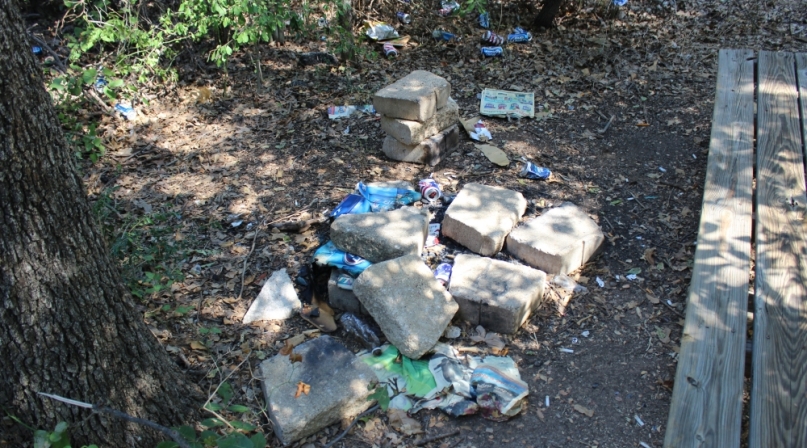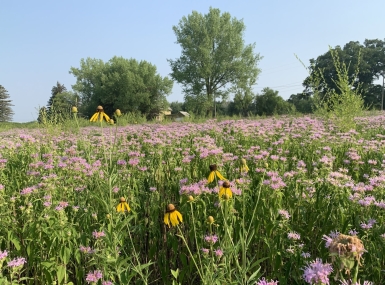Environmental court dockets can be littered with alligators, hoarding, junked cars cases

Counties use environmental courts to solve environmental problems, rather than focusing on punishment for violators
Rockdale County, Ga., expects to put a lid on trash violations by adding an environmental court to its justice system by June 1, according to County CEO Oz Nesbitt.
“We’ve had a major issue over the past several years in the area of code enforcement and littering, people just taking household waste and debris and just putting it all over the county instead of properly disposing of it,” Nesbitt said. “Our code enforcement team has just been inundated with so many calls and tracking people down, and by creating an environmental court it takes the stress, the strain and the pressure off our regular magistrate court that addresses county ordinances.”
Learn more
The court will focus on violators who dump household waste and debris along the county rights-of-way or in vacant lots and fields, taking pressure off the code enforcement division so they can focus on bigger issues such as noise and ordinance violations. The new court will issue civil penalties ranging from a fine to jail time.
Although environmental courts are somewhat unusual, a few have been operating for quite some time.
Twenty-seven years ago, the Ohio General Assembly created an environmental court in Franklin County to deal with housing, and health and safety code-related issues such as nuisance properties and abandoned structures.
Why an environmental court? “It provides not only a fast-track to deal with these cases, but you also have a judge and staff who have expertise involving these issues, and it provides consistency as far as the process and outcomes,” said Judge Dan Hawkins, Franklin County Municipal Court, Environmental Division.
“It’s a problem-solving court,” Hawkins said. Its roster includes three environmental specialists with backgrounds in environmental science, county parks, and experience as code or law enforcement officers. “They’ll go out and do inspections making sure people are making progress on their houses, check on animal or pollution-related cases, landlords, usually in the afternoons,” he said. “They might testify in court in the mornings.”
The difference between a typical court and the environmental court is finding solutions, Hawkins said.
In the Franklin County environmental court, “the problem is ongoing. I could send someone to jail for having a bunch of junked cars, or I can do that plus try to figure out what to do with the junked cars. It’s more of a problem-solving, outside-the-box-thinking kind of court.
“If you have someone with junked cars on their property, cars on blocks in the front yard or what have you, any other judge will give them a $100 fine,” he said.
“My court has the ability to not only fine them, but to put them in jail for 10 days. I have the staff who can go out there in 10 days and if the cars are gone, great. If not, they lock them up for 10 days. It’s amazing how effective that is to have that follow-up.”
Helping those who can’t help themselves
Some cases involve elderly veterans or widows who aren’t necessarily committing a code violation but just are not up to fixing a problem, Hawkins said. His court has relationships with Habitat for Humanity and veterans’ and church groups that come in and “help paint that lady’s house or fix that guy’s fence,” he said.
“You feel bad for the property owners as well as the neighbors whose property values are affected by violations,” he said. “I read somewhere that there is an average 25 percent decrease in property value for those homes that are within 500 feet of a vacant structure.”
The court does a lot of public outreach education to help people stay out of court too, he said, educating them at an annual open house or at an Earth Day event or at the “Party for the Planet” at the zoo.
The environmental court handles from 800 to 1,000 cases per month, hearing everything from animal cruelty cases to wildlife trafficking, littering, open dumping and pollution cases.
A Six-foot Alligator in the Basement
One of the more unusual animal cases that Hawkins has worked on involved an alligator.
“I think it was my first week on the job,” he said. “You can have them, but you need a permit. To get a permit, there’s a whole lot of things you need. It’s not that easy to get.”
“This guy bought the alligator when it was a baby, 6 inches big. He kept it in his basement, and it got bigger and bigger until the point where ... He lives across the street from a school, and he’s got this six-foot long alligator in his basement.
A code officer found it on some kind of inspection. The guy wasn’t a criminal, he didn’t know what to do with it,” he said. “We had to figure out what to do with the alligator — going back to problem-solving. He was going to have it killed and stuffed. And I said ‘Well, hold on buddy.’”
Hawkins’ chief environmental specialist at the time did some research and found a sanctuary down in South Carolina that would come up and get it.
Cases of hoarding “are the hardest to deal with,” Hawkins said, “because they clearly have mental health issues. You can give permission to clear everything out, and they do that and it costs a lot of money and it makes the neighbors happy for about a week until it gets full again.”
In the past, the court was “constantly dealing with the property but not dealing with the person. I reached out to our mental health board, so now in addition to dealing with the property we send them to court-ordered counseling,” he said.
“We just want to make it where it’s safe, get the outside cleaned up, make sure it’s up to code, there’s adequate egress,” he said. “We just want to make it safe for them while they continue their treatment.”
“It can be frustrating,” he said. “I’d hear some hoarders say ‘I’d rather go to jail then have you touch my stuff.’”
Attachments
Related News

U.S. Department of Energy announces $18 million for Local Government Energy Program
U.S. Department of Energy announces $18 million for Local Government Energy Program

Sherburne County and tribal nations collaborate on county park
Sherburne County, Minn. engaged tribal nations to revise its plans for a park that included a Native American burial ground.

U.S. Army Corps of Engineers publishes memo on protection of non-jurisdictional waters and wetlands
U.S. Army Corps of Engineers memo directs civil works actions on water and wetlands in response to recent Waters of the United States (WOTUS) changes.
